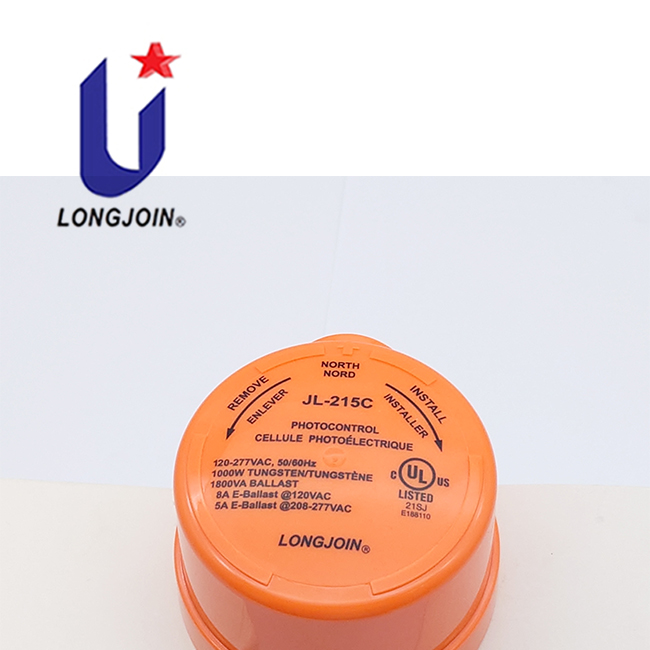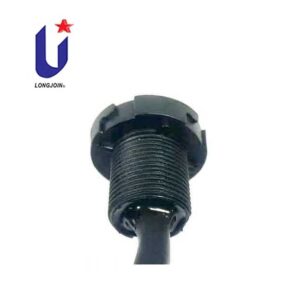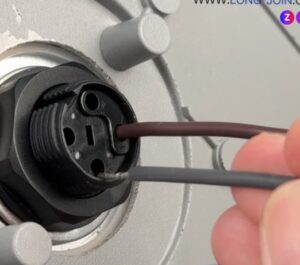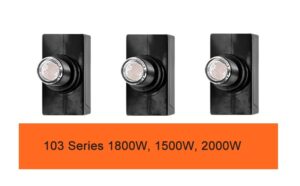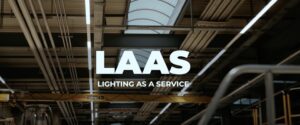أين تقع أعلى نقطة في وحدة التحكم الضوئي؟ فهم اختبار TC على JL-215C
يقدم
لم تعد الأضواء الحديثة مجرد إضاءة وإطفاء، بل أصبحت ذكية ومتصلة بالإنترنت. كما أنها تتبع قواعد سلامة عالمية صارمة لحماية الجميع اليوم. ويكمن جوهر هذا التغيير في مستشعر الخلية الضوئية. إنه صغير الحجم ولكنه بالغ الأهمية. فهو يُخبر مصباح الشارع متى يُضاء ومتى يُطفأ.
أحد الأسئلة المتكررة من قبل الشركات المصنعة للمعدات الأصلية ومختبرات الشهادات هو:
"أين توجد النقطة الأكثر سخونة (TC) على جهاز الخلية الضوئية الخاص بك؟"
هذا السؤال وحده يُحدد ما إذا كان التركيب يجتاز اختبارات UL/IEC أم يحتاج إلى إعادة تصميم مكلفة. مؤخرًا، سأل أحد العملاء هذا السؤال تحديدًا حول خلية ضوئية JL-215C ذات القفل اللولبي. كان هدفهم إجراء اختبار ارتفاع الحرارة وفقًا لمعايير UL وIEC و معايير EN.
في هذه المقالة، نجيب على هذا السؤال، ونشرح سبب أهميته، ونوضح كيف يدعم Long-Join العلامات التجارية للإضاءة باستخدام الخلايا الضوئية الموثوقة والجاهزة للشهادة.
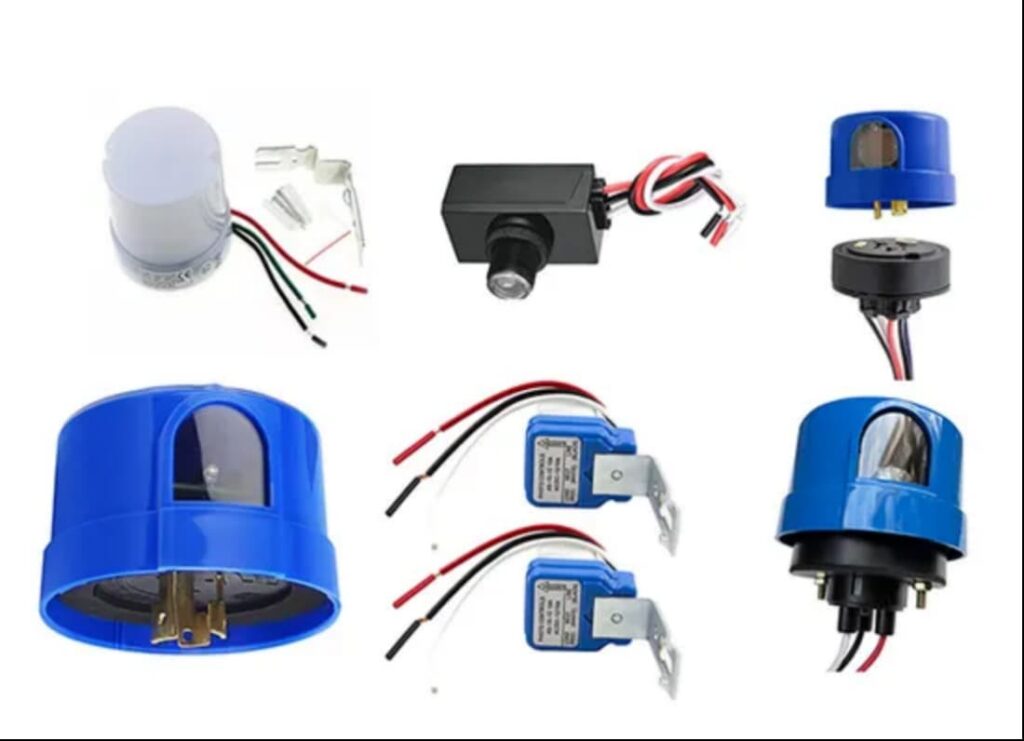
ما هو TC ولماذا يجب قياسه؟
فكر في نقطة معامل درجة الحرارة (TC) كنقطة ساخنة للمحرك في وحدة التحكم الضوئي. وكما يضمن فحص أسخن جزء في محرك السيارة التشغيل الآمن، فإن تحديد درجة حرارة المحرك على مستشعر الخلية الضوئية الضوئية يساعد في التنبؤ بعمره الافتراضي وسلامته وأدائه.
وهنا السبب وراء أهمية ذلك:
سبب | شرح لاختبار الخلايا الضوئية |
شهادة | تتطلب معايير UL8750 وIEC 60598 وEN 62471 إجراء تقييم حراري عند أعلى نقطة حرارة. إذا تم تركيب الخلية الضوئية لإضاءة الشوارع على وحدة إضاءة، فإنها تُصبح جزءًا من هذا الاختبار. |
مصداقية | الحرارة تعمل على تسريع شيخوخة المرحلات والمستشعرات داخل مستشعر الضوء مفتاح الخلية الضوئية. يساعد اختبار TC على التنبؤ بعمر الخدمة الفعلي. |
مخاطر الفشل | قد تُشوّه النقاط الساخنة البلاستيك، أو تُلحّم نقاط التلامس، أو تُكسر المكثفات. يُقلّل اختبار TC من مخاطر الضمان ويحمي العلامة التجارية. |
بدون قياس درجة الحرارة، قد يعمل نظام التحكم بالخلية الضوئية بكفاءة في المختبر، لكنه قد يفشل في الميدان تحت تأثير الحرارة. لهذا السبب، لا تتجاهل العلامات التجارية الرائدة هذه الخطوة أبدًا.
أين تقع نقطة TC على JL-215C؟
JL-215C هو جهاز تحكم ضوئي حراري بقفل لولبي، يُستخدم عادةً في حزم الجدران الخارجية، وإضاءة المظلات، وأسقف الأعمدة. ولكن أين ينبغي للمهندسين تحديدًا قياس TC؟
الجواب:
على سطح علبة التتابع، بالقرب من نقطة لحام الطرف المباشر أو ملف التتابع.
هذا الموقع مهم لأن مصادر الحرارة الداخلية - وخاصةً المرحلات ومثبطات زيادة التيار MOV - تُولّد حرارةً أكبر من الغلاف الخارجي. قياس الغلاف البلاستيكي الخارجي فقط قد يُعطي نتائج مضللة.
نصيحة اختبار:
ثبت ترموكبلًا مباشرةً على جسم المرحل داخل الغلاف. قس عند أقصى حمل مُصنّف (مثلًا، 1000 واط من التنغستن عند درجة حرارة محيطة 25 درجة مئوية). هذا يضمن الامتثال لمعايير UL و معايير اللجنة الكهروتقنية الدولية.
عنصر | مساهمة الحرارة | سبب قرب TC |
ملف التتابع ومفصل اللحام | عالي | يؤدي تدفق التيار المستمر إلى توليد حرارة مركزة. |
مانع زيادة التيار MOV | واسطة | يمتص طفرات الجهد الكهربي، ويسخن أثناء حدوثها. |
غلاف بلاستيكي | قليل | يظل أكثر برودة؛ ولا يعكس الضغط الداخلي الحقيقي. |
من خلال استهداف نقطة TC الصحيحة، يمكن للمهندسين تجنب الإبلاغ عن الحرارة بشكل غير كاف وضمان نتائج شهادة موثوقة.
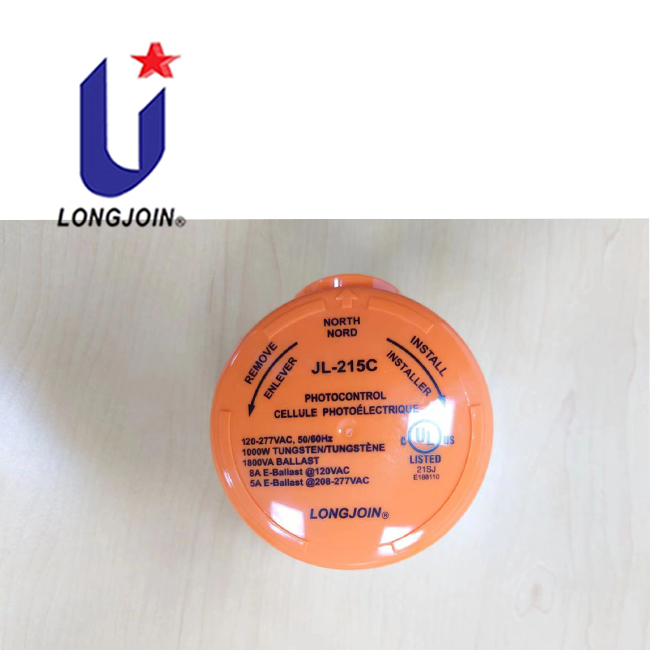
ما هي المواصفات الرئيسية للخلية الضوئية JL-215C؟
صُمم JL-215C لتطبيقات إضاءة الشوارع الخارجية منخفضة التكلفة والمتينة. وتوازن ميزاته بين السلامة والأداء والامتثال.
ميزة | مواصفات JL-215C | لماذا هذا مهم |
درجة حرارة التشغيل | من -40 درجة مئوية إلى +70 درجة مئوية | يتحمل الظروف المناخية القاسية من الشتاء البارد إلى الصيف الحار. |
الحمل المقدر | صابورة 1800 فولت أمبير / 1000 واط تنجستن | مناسب لكل من المصابيح التقليدية ومشاريع الخلايا الضوئية لإضاءة الشوارع LED الحديثة. |
مؤقت التأخير | مدمج | يتجنب التبديل الخاطئ بين المصابيح الأمامية للسيارة أو الإضاءة. |
مواد الإسكان | البولي كربونات المستقرة للأشعة فوق البنفسجية | يمنع الاصفرار والتشقق عند الاستخدام الخارجي لفترة طويلة. |
حماية من زيادة التيار الكهربائي | يعتمد على MOV | يحمي الدوائر ضد الارتفاعات العابرة. |
التركيب | قفل ملتوٍ | متوافق مع معيار NEMA للتوصيل بقاعدة 3/7 سنون |
من الناحية العملية، يعني هذا أن المدينة التي تقوم بالترقية إلى أنظمة إضاءة الشوارع باستخدام الخلايا الضوئية يمكنها الاعتماد على JL-215C للحصول على شهادة السلامة والموثوقية الميدانية على المدى الطويل.
للحصول على نظرة عامة مفصلة على المنتج، راجع موقعنا ورقة بيانات JL-215C ذات الوصلة الطويلة.

لماذا يعتبر Long-Join رائدًا في موثوقية الخلايا الضوئية؟
ليست كل الخلايا الضوئية متساوية. بصفتها شركة مصنعة حاصلة على شهادة UL773 بخبرة تزيد عن 20 عامًا، تجمع Long-Join بين الخبرة في التصميم ومراقبة الجودة الصارمة.
فيما يلي كيفية مساعدتنا للعملاء على تقليل المخاطر:
خدمة | ما يوفره Long-Join |
محاكاة التصميم الحراري | تحليل الأشعة تحت الحمراء لنقاط TC قبل الإنتاج الضخم. |
تخطيطات شفافة | مخططات واضحة حتى تتمكن الشركات المصنعة للمعدات الأصلية من معرفة مكان توليد الحرارة. |
عمليات مراقبة الجودة | 100% معايرة درجة الحرارة واختبارات الشيخوخة في درجات الحرارة العالية. |
مجموعة المنتجات | من أنواع القفل الملتوي مثل JL-215C إلى عناصر التحكم الضوئية الذكية مع تكامل LoRa/NB-IoT. |
عندما تنشر المدن آلاف وحدات الخلايا الضوئية في الشوارع، تتحول الأعطال الصغيرة إلى مشاكل كبيرة. لهذا السبب، نستثمر في الموثوقية المسبقة، لنتمكن من تقديم حلول تحكم في الإضاءة أكثر ذكاءً وأمانًا لأسواقنا.
تعرف على المزيد حول معايير الاختبار لدينا على مراقبة جودة الوصلات الطويلة.
كيف يدعم هذا التثبيت؟
غالبًا ما يواجه مصنعو التركيبات تأخيرًا في الحصول على الاعتمادات بسبب فشل المكونات الصغيرة في اجتياز الاختبار الحراري. من خلال الشراكة مع Long-Join، يتجنب مصنعو المعدات الأصلية هذا الاختناق.
- نحن نقدم وثائق TC مخصصة لخلايانا الضوئية.
- نحن ندعم مختبرات الشهادات بالتصاميم المرجعية.
- نحن نعمل على تكييف التصميمات لتناسب بيئات الإضاءة الفريدة، مثل العلب المغلقة أو التركيبات ذات القدرة الكهربائية العالية.
يُسرّع هذا من الحصول على موافقة UL/IEC ويُقلّل من إعادة العمل الهندسي. بالنسبة لمُصنّعي المعدات الأصلية، يعني هذا سرعةً في طرح المنتج في السوق.
ماذا يعني هذا بالنسبة لمشاريع المدن الذكية؟
تتوقع المدن التي تستثمر في الشبكات الذكية والإضاءة التكيفية أكثر من مجرد مستشعر ضوئي كهربائي أساسي. فهي تريد الموثوقية والامتثال والتكامل السلس.
يضمن استخدام مفتاح الخلية الضوئية المجرب مثل JL-215C ما يلي:
- الامتثال للسلامة: مقابلة قواعد UL/IEC الحرارية.
- عمر خدمة طويل: تقليل تكاليف الاستبدال.
- قابلية التوسع: من الأعمدة الفردية إلى عمليات الطرح على مستوى المدينة.
بفضل خيارات مفتاح التحكم عن بعد الذكي المتوافق مع إنترنت الأشياء من Long-Join، يمكن للبلديات أن تخطو بثقة نحو مستقبل الإضاءة الذكية.
خاتمة
هل تُجهّز وحدتك الإنارة للحصول على شهادة UL أو IEC؟ هل تحتاج إلى شريك يفهم أجهزة استشعار الخلايا الضوئية كمنتج ومتطلب للشهادة؟
اتصال الانضمام الطويل اليوم لمناقشة كيفية ضوابط الخلية الضوئية، مثل JL-215C، يمكن أن يساعدك في تحقيق الامتثال والموثوقية الميدانية على المدى الطويل.
الروابط الخارجية:
●https://www.ul.com/resources/electrical-insulation-systems-eis-product-standards
●https://iec.ch/
●https://electronics.stackexchange.com/questions/662375/mcpcb-what-is-tc-point
●https://www.cencenelec.eu/european-standardization/european-standards/

